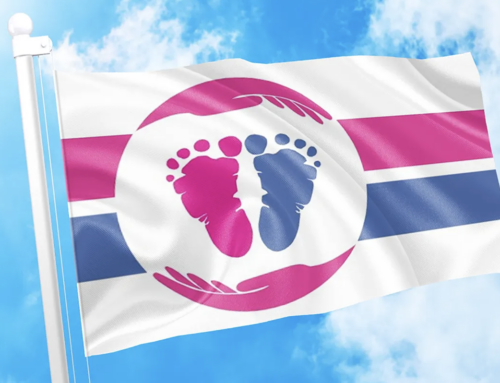Is it a wrong use of words to call an unborn child ‘a child?’ L.M., Cornwall, Ontario
In the English language the word ‘child’ is used – as it has been used for centuries – to describe a pre-born human being. The Oxford English Dictionary pre-defines ‘pregnant’ as ‘with child’ and Taber’s Cyclopedia Medical Dictionary has the same definition. Both the King James and the Douai-Rheims translations of the Bible speak of Mary ‘being with child.’ Earlier still, in the 13th and 14th centuries, pregnant women were said to be ‘childing.’
In 1795, an English court interpreted the ordinary meaning of ‘children’ in a will to include a child in the womb: “An infant en ventre sa mère, who by the course and order of nature is then living, comes clearly within the description of ‘children living at the time of his decease!’
Three years later, in 1798, another English court added its weight to this opinion: “Why should not children en ventre sa mère be considered generally as in existence? They are entitled to all the privileges of other persons.” Note that in 1798 an English court called a pre-born child a person.
In the English language the word ‘child’ does not necessarily refer to a person’s age. It also describes a relationship between a son or a daughter and the parents. A child is the ‘offspring’ of parents, a relationship that begins at conception and does not end even at death. To a mother her son is still her child even when he, in his turn, has children or grandchildren.
Pro-abortionists try to dehumanize the pre-born child by calling it a fetus. In fact, in the first eight weeks it is not a fetus. On the other hand, it is always a child.
Why isn’t it sensible to make a living will and make your own choice of treatment if you become incompetent in the future? D.B.S., Toronto, Ontario.
Surely you would want an informed choice and consent when the issue is your life or death. When you sign a living will you have no way of knowing what medical options will be open to you, ten or even two years down the road. Medical advances are so fast we cannot guess at new treatments even a few months hence.
I can remember when Tuberculosis was more feared than cancer, and when there was no real treatment for diabetes or leprosy.
Times change, and so do our options.
Informed decisions can only be made in particular situations and at a specific time, when one knows and understands the medical diagnosis and the options for treatment (along with the expected benefits as well as possible harmful effects).
We cannot read the future, and a choice in a living will is one we make blindfolded.
What exactly is palliative care? Is a patient treated? E.C., Toronto, Ontario.
The patient’s treatment in palliative care is designed to give comfort and ease, but not to cure. In the final stages of cancer, for example, when chemotherapy has proved useless, the patient will receive care to make his last days as comfortable and pain free as possible.
I came across a reference to ‘a physicians’ campaign against abortion. When and where was it? M.L., Toronto, Ontario.
There is history of medicine and abortion in the United States, called Abortion in America, written by Professor James Mohr which deals with this doctor’s crusade.
Scientific research showed by the mid 19th century that the old ideas of ‘quickening’ were wrong and that life started at conception. The older laws were insufficient to protect the unborn child and the physicians saw the need for new and more stringent statutes.
Encouraged by the American Medical Association, which had been founded in 1847 and which was strongly anti-abortion, the doctors used their influence on state legislators to pass laws giving full legal protection to the unborn child from conception. The physicians had great success and some 40 anti-abortion laws were enacted in various states and territories in the twenty years between 1860 and 1880.



